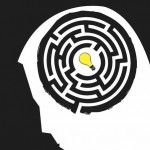Dealing with creative frustration
Had a chance last week to practice with the idea I mentioned in my last post that during creative work, the feeling of frustration signals the brain to try a different approach. Since that hit-the-wall feeling is my least favorite part of creating something new, I was interested in what would happen if I interpreted it as a helpful phase, rather than as a torment or as a sign of my particular inadequacy.
Well, I spent several 13-hour days last week working on a new, exciting project for one of our clients. Lots of design and writing; lots of puzzlement and fog before it comes clear. But this time, when the frustration hit, I thought, “Good! This means that my brain is about to throw the problem over to the right hemisphere for a different kind of problem-solving.”
And it actually worked that way! I stayed quiet for a bit, and then I could feel a different way of thinking start up. The room looked brighter; I began to get a sense of how we could work out different elements of the design. Pretty soon the flow of ideas was back. I could see a clearer path ahead.
This pattern happened a number of times during those long days. And it was nothing new — I’ve noticed the on-again, off-again rhythm of problem-solving for many years.
But what was different — and tremendously valuable — was the sense that my frustration was an inevitable, even welcome part of the process. So instead of becoming angry with the impasse, or fearful, or self-doubting, I waited it out. It didn’t take long, as it happened. And in the meantime, I wasn’t wasting all that energy on being frustrated about being frustrated.
I chose the illustration for this post because it shows the idea as the central point of a labyrinth. I’ve loved labyrinths for many years, because despite complicated meanderings, each is actually a single path to its center. Getting there is inevitable, no matter how hopeless it may seem on the way.
It reminds me that our minds are made for creativity, if we follow the path that’s already there.

